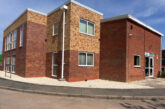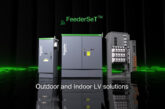
Jason Hallam, Technical Manager at CPN-Cudis, explains how electricians can guard against the associated risks of an unprotected electrical system.
In today’s technically advanced world, every home and workplace is filled with electronic equipment. All electrical systems can be vulnerable to transient overvoltages and have the potential to cause serious harm.
In the UK, we have an average of 300,000 ground lightning strikes a year, with many hitting buildings and overhead power lines. A typical lightning bolt can contain up to one billion volts and between 10,000 and 200,000 A of current. These potentially harmful voltages can be induced into buildings from a direct strike or from the secondary effects of lightning, which can reach up to 6,000V.
Another source of danger is found in switching events, such as starting up equipment from plant machinery or an electrical network. It can generate overvoltage in the building or externally, powering lift motors, refrigeration equipment and air conditioning systems.
The need for surge protection
The greater the overvoltage, the bigger the risk of disruption, degradation and damage to the equipment connected to the electrical system. As technology advances, components in electronic equipment continue to become smaller and more sensitive to these types of influences.
In order to protect equipment, it’s necessary to select a Surge Protection Device (SPD) that can deal with these effects. A Type 1 SPD will deal with a direct strike, Type 2 and Type 3 SDPs deal with the locally generated surges and a combination of these (Co-ordinated SPDs) can provide full protection to equipment within a building.
Ease of installation
When designed into the installation, fitting a SPD is a straightforward task. It’s important to allow for a spare way in the distribution board, either three-phase or single-phase, and fitting it at the origin.
The supply feeding the SPD is usually via a circuit breaker, to allow for commissioning and testing. Isolating of the SPD is recommended when carrying out loop impedance and insulation resistance testing. Those fitted at the origin need to be on a non-earth leakage protected circuit. It’s also important to note the earthing arrangement before ordering.
The SPD should be mounted as close as possible to the incoming terminals of the circuits being protected, with cables between protective MCBs kept as short as possible in order for the SPD to operate at its best performing clamping voltage.

The correct type of device
CPN-Cudis has a wide range of surge protection devices, all manufactured in the UK. The T1SP range and the DSP series are ideally suited anywhere there is a perceived risk from lightning strikes and transient voltages, including hospitals, schools, and all commercial and industrial premises.
The T1SP range of surge arrestors are Class 1 and 2 protective devices, available in single-phase and three-phase configurations. The DSP series surge arrestors are a robust Class 2 arrestor, also available in single and three-phase. The units feature a two stage arrestor that gives the system double the protection of normal ‘plug-in’ surge arrestors. This allows for advance warning when the device needs replacing.
Our SPM series of Type 2 arrestors are rated at Class 2 protection levels and can be configured in various formats to cater for most earthing systems. The units feature a pluggable surge protection module that allows for the replacement of the modules without having to disconnect cabling. These are ideally suited for most industrial and commercial applications.
The Black Box is a Type 3, Class 3 surge arrester that provides a flexible solution to protecting individual pieces of equipment. Its small size means that it can be mounted in confined spaces, making it perfectly suited to ring mains and individual sockets, switch fuse spurs, lighting, fire alarm panels, cameras and CCTV. It also benefits from an audible alarm which indicates if the arrester needs to be replaced. The Black Box offers 10m of protection either side of the device it’s installed on.
When deciding whether surge protection is required, consider this question – does the building (or an adjacent building) contain a lightning protection system? If the answer is yes, then it’s recommended to protect against surges. As a general rule, the benefits of fitting SPDs far outweigh the initial cost.








